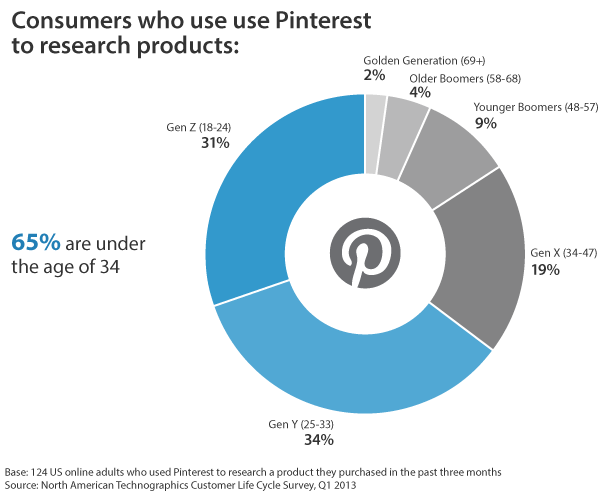The Data Digest: The Unique Profile Of Pinterest Users
“How can you reinvent your brand to appeal to younger consumers?” This is the million-dollar question, and the contestant sitting in the hot seat is you. But don’t panic; why not use a lifeline? Ask the audience! That was the approach car manufacturer Buick recently took when designing the 2013 Encore luxury model.
Striving to portray a more fun, contemporary side of the established auto brand and win loyalty among younger consumers, Buick promoted its "Pinterest to Dashboard" contest by calling on participants to create Pinterest boards that spoke to personal styles and passions. The Buick design team selected a winning collection to become the inspiration for the interior and exterior designs of the automobile. While this new look is not yet available on the market, Buick managed to connect with younger consumers in an exciting and relevant way. Through Pinterest, the company engaged 10 extremely influential bloggers (the winner of the competition has nearly 4 million Pinterest followers), dozens of lifestyle editors from media and publication companies, and millions of Pinterest users whose online responses indicated the winning pinboard.
Forrester’s Consumer Technographics® data suggests that Buick certainly chose the right platform to reach its desired market. Launched only three years ago, Pinterest is currently the third-largest social media platform in the US behind Facebook and Twitter. Of those 5.5 million US online adults who use Pinterest to research products for purchase, 65% are younger than 35 and 33% have an average household income of more than $100,000.

Buick encouraged personal expression and leveraged this rapidly growing social media channel, allowing the promotional interaction to be memorable and relevant to the young consumer. Buick’s strategy exemplifies the “outside-in” marketing perspective that Forrester advocates.
As my colleague Jim Nail sets out in his recent report, marketing no longer aims messages at passive consumer targets. Instead, “social media changes this mindset toward consumers as conversation partners, insight generators, and co-creators.” It is important for companies to “feed customers’ urge to share . . . each new marketing program must reflect a deep understanding of the enjoyment that customers derive from sharing,” as this effort strengthens brand awareness by way of consumer creativity and participation.